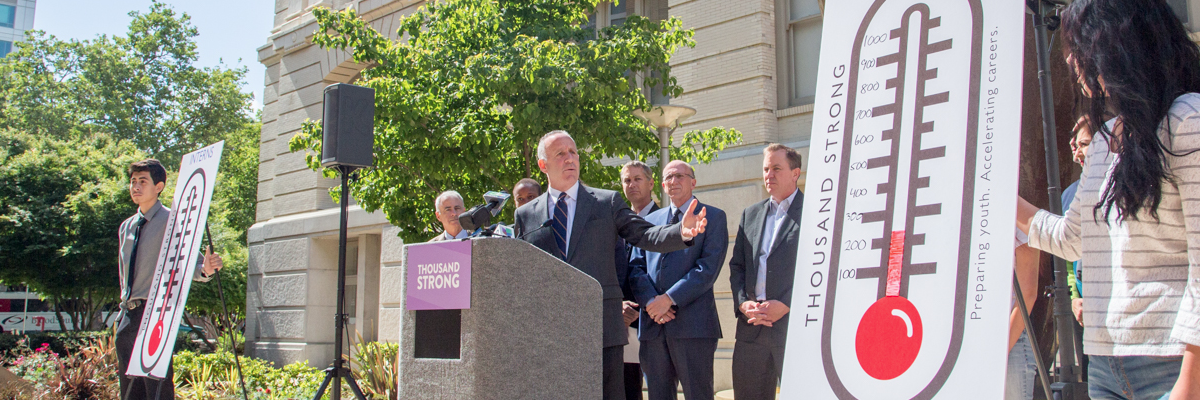
Sacramento homeless guy passed out near Sacramento City College and a restaurant. (Photo: Katy Grimes for California Globe)
Navigating City Services for Homeless: It’s ‘Impossible’ and a ‘Nightmare’
There’s always more government money in others’ misery
By Katy Grimes, February 28, 2022 3:49 pm
Most city residents acknowledge that the more than 11,000 homeless living on Sacramento streets need some serious form of help. Most are in need of mental health services and drug addiction treatment. But there are some who live on the streets, who may be addicted or suffering from mental health issues, who want to get help, get off the streets, and start on a path to recovery and self-sufficiency.
But the path of Sacramento “Services” is riddled with roadblock after roadblock that sober educated adults can barely even navigate.
Press play to hear a narrated version of this story, presented by AudioHopper.
A friend recently told of how she called the city’s Child Protective Services on a street woman whose was using her baby as a ploy to panhandle. On a recent very cold and windy day, the panhandler, who is recognized as a regular around town, had her baby with her, barely clothed, accosting shoppers at a local grocery store. My friend called CPS. The agent she spoke with said my friend needed to talk to a social worker. She took my friend’s name and contact info and said she’d have someone call.
A social worker called rather quickly but said couldn’t do anything other than a “well-baby check.” She then told my friend to call the police. “Isn’t that your job?” my friend asked. The social worker conceded that she probably could call police.
And that is as far as that went. “Child Protective Services” is largely a misnomer.
That is just one example.
In my downtown Sacramento neighborhood just south of the city, in 2018, some neighbors formed an unofficial group to be able to communicate about the ongoing crime, theft, drug-related problems and homeless living on city and neighborhood streets. They taught each other how and when to involve the city and police on homeless issues, when to call for help, when to report crimes, and the like. But they also began to recognize certain homeless people living on the streets, and got to know a few.
Two women began to help “John,” who said he wanted to get clean and stop living on the streets. What followed was a labyrinth of complications, disjointed services, programs, and no one shelter location John could turn himself over to for help.
The first roadblock was that in order to get into a shelter, John needed a Social Security card, a birth certificate to obtain the Social Security card, and a Tuberculosis test.
Initially they were unable to get him any help from the city or county until he agreed to move into a shelter, so he remained on the streets while he worked on getting his birth certificate and social security card.
The first shelter they found for him was full of drug addicts, pedophiles and criminals, and he was working exceedingly hard to stay sober.
Because he was already on Suboxone for treatment of opioid dependence, and trying to rid himself of his heroin drug addiction, many shelters would not take him. They said they considered Suboxone a drug and told his two neighbor-advocates that until he was “off drugs” including the Suboxone, they couldn’t help.
So the women helping John appealed to the other neighbors in the group to contribute funds to help get him a long term motel room while he sought treatment.
But finding other help was a nightmare.They quickly found out there is no actual process to connect a homeless person seeking help with the necessary services for someone wanting to get off drugs, and off the streets, despite the millions of dollars being spent. There is not one office to go to for a coordination of services and benefits.
On the City of Sacramento website titled “Responding to Homelessness, which leads to another city website, this is what the city says about homeless programs:
SAFETY
The City is committed to providing safety for all its residents, which includes the immediate safety needs of those experiencing homelessness.
STABILITY
The City is committed to connecting individuals with health and social services so they can transition from the streets or shelters into more stable conditions.
SUCCESS
The City is committed to helping individuals who have achieved stability move into permanent housing and maintain long-term success.
That website takes you to two other city pages only offering the homeless “Safe Parking” in a parking lot on the southern section of Front Street. Eventually another link takes you to housing programs coordinated through Sacramento Steps Forward “for transitional or permanent housing,” because the city’s focus is on “housing first,” a losing holdover from the Obama administration.
The two women also told the Globe about the city’s only homeless “Navigator,” who resides on the third floor of the Tsakopoulos Library Galleria downtown, which doesn’t exactly have a flashing neon sign on the street identifying this service. The library is also a beautiful venue for weddings and events. We did not locate a city reference for a homeless “Navigator” on the city website.
When we searched for “City of Sacramento homeless Navigator,” we were taken to the Downtown Partnership website which advocates only for housing, and has photos of “Fighting grime in the urban core one street at a time.” It’s not the fault of the Downtown Partnership – they are an advocacy group for downtown businesses.
The halfway houses for drug addiction are a nightmare, the two women told the Globe. The manager of a halfway house they got John into was also an addict. The house was filthy. And John had to share a bedroom with another addict costing $500 per month. He escaped from the house within the first day.
A Motel 6/TravelLodge designated for homeless had bedbugs and cockroaches, and open drug use.
John went back to the Navigator every day. He also started attending Narcotics Anonymous meetings.
But these city “services” for homeless really aren’t services. John found it to be a mole game, as each “service” only referred him to another service. And the two women told the Globe that of the listing sheet of “services” prepared by the city, few of the phone numbers actually work.
At the Railroad Shelter the two women found, John kept seeing people he knew from the streets who were active drug users. It was a low-barrier shelter, which means few if any rules about doing drugs, dealing, etc… The two women were finally able to move him to another shelter, but it took an act of divine intervention to even discover it was available.
The callousness of the government involvement is the the first problem, but not the biggest one; the money government is making and passing through to agencies, non-governmental organizations and non-profits is. That is where the trail of money usually goes cold.
Last October 2021, the Globe reported that the two “Safe Ground” sites near the downtown Sacramento neighborhood of Land Park had a “23% success rate” in getting people off the street over the past 6 months, according to the City of Sacramento.
The city called this 23% rate a “success.” We gave it an “F” grade.
Last fall, the city also opened a 100-bed homeless shelter on X Street near Alhambra Boulevard. When we checked in a month later, there were 13 people staying in that shelter. Another success?
The City also claims to have gotten 200 people off the streets, but there is no real evidence of this. Was this permanent? Or were these 200 people just provided some sort of shelter for a short period of time?
The City claims that since they opened the “low barrier” sites, which they claim means that they “accept people as they are,” have remained full.
“Low barrier” does not mean “they accept people as they are.” Low barrier shelters are popular with the homeless because there is no accountability: no sobriety requirement, no treatment requirement. They are allowed to continue to use heroin and meth – the two drugs of choice in Sacramento’s homeless community. And most of the users end up getting kicked right back out onto the streets, despite needing a great deal of help.
John has remained off drugs. He lives in an apartment, has a cat, volunteers at a nearby church, and is making strides every day. Transitioning from drug addiction on the streets to a life of sobriety can be done. It took John’s own strong will and the two determined friends he calls his “angels” to make his transition work. But what about the rest? Who is really advocating for them? Mayor Darrell Steinberg? The city Navigator? Shelter operators?
Why would the Mayor, city Navigator and shelter operators want to see the homeless population diminish when the funding stream of billions of dollars would also dry up?
As we recently reported, Union Gospel Mission in Sacramento takes in dozens of drug addicted homeless men every year, helps them get sober, educated, acquire skills, learn jobs, and graduates them back into society. They could teach cities and counties how to do this. And they do it without taking any government money, and no one at Union Gospel Mission is getting rich doing this.
If voters want to see a real change in their cities and on the streets, one place to start is holding accountable the politicians who have supported these failed policies and programs, but insist that their homeless “programs” are legit. They aren’t – the growing homeless populations is a testament to this.
If the Union Gospel Mission isn’t successful and accountable in their mission to help those who want off the street into sobriety and productivity, the private donations dry up and they close down. But if the City of Sacramento isn’t successful in helping the thousands of lost souls into legitimate programs, they don’t shut down. They don’t lose money. And no one is fired.
Instead, those who run city programs say they need more funding, because really, these are government jobs programs. The purpose of the program is secondary.
If we have learned nothing else, know that there’s always more government money in others’ misery.
- California Elections Code Book Published - July 26, 2024
- California Supreme Court Ends Legal Snafu Over Gig Drivers – Upholds Prop. 22 - July 26, 2024
- Sen. Kamala Harris Claimed Ignorance Over Long-time Employee Sex Abuse Case - July 25, 2024





Katy Grimes, I am so grateful to see this fine, comprehensive, and ultimately hopeful article about what’s gone wrong with government-run homeless programs but also what has gone right in some organizations’ response to the tortured souls on our city streets.
To follow “John,” a heroin addict who sincerely sought help to get right, and his angel friends who tried to help him, is to see and almost experience first-hand ourselves the frustrations of government dead-ends and the uncaring and alienating culture that is a part of it. God bless “John” that he survived it all and bless the angel women who were determined to help in spite of the uncaring government facade that nevertheless pretends to be helping and compassionate. There are many “Johns,” I know.
We know what works. The Union Gospel Mission and the Union Rescue Mission models work. Discipline, rules, standards, (“tough love”) alongside the teaching and rehabilitation work. Why not imitate and expand what works? When you hear the men and women who have gone through the URM programs and have finally made it to graduation, some of whom entered the mission with decades of drug and alcohol addictions and living on the streets behind them, you’re amazed by their recovery, their redemption, their love and respect for everyone who mentored them, was kind to them, was tough with them, was honest with them, and never gave up on them, you know this is the way all the programs should be, if only they would. These missions are the model, this is the way.
It’s quite a stark contrast to what the government entities have to offer, and city leadership’s cruel and really criminal neglect of such people when the city is well-funded and charged with helping those on the street. And feckless and dishonest politicians actually claim to be doing so. But voters certainly didn’t approve the billions in homeless funding to end up with what we see now, the opposite of what is needed. We need new leadership that is not corrupt, who will know the right thing to do and make it happen. When you follow a model that has been shown to work, it’s not really that complicated, to at least begin to get on the right track.
Union Rescue Mission (L.A.)
Reverend Andy Bales
https://urm.org
Simply evidence everywhere of failed left wing policies! THEY DON’T WORK.
Sadly, it’s not surprising that Mayor Steinberg and the rest of the deep-state/dark-cult Democrat cabal have profited from the homeless crisis that they helped create? Thankfully the Union Gospel Mission is there making a difference and getting results for the addicted homeless who want help.